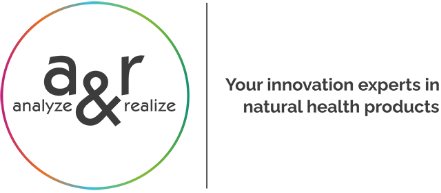
Substance-based Medical devices
In May 2017, the Medical Device Regulation (EU) 2017/745 (MDR) entered into force, replacing the old Medical Decide Directive (MDD; 93/42/EEC medical devices). So theoretically, for a time period of 3 years following the entry into force of the MDR, manufacturers could decide to certify their products either under the new MDR or under the old MDD. However, after 26th May 2020, this will no longer be possible. Existing products (certified under MDD) may stay on the market until their certification expires, at the latest May 2024. Substance-based medical devices class I that are not reclassified can be produced until 25th May 2020 and then stay on the market until already distributed stock runs out. Despite the gain in time due to prolongation of the re-certification period until 26 May 2024, manufacturers already need to fulfill certain new requirements by 26 May 2020.
During this year, certified Notified Bodies (NB) were considered the bottleneck for the industry under MDR. By July 2019, only 2 NB had been designated to certify medical devices. Now, 7 MDR Notified Bodies are available in Europe (excluding BSI Assurance UK Ltd due to Brexit). The list of NBs available at any given time can be found via the NANDO website.
In order to keep products on the market, manufacturers of substance-based medical devices need to be prepared to upgrade their product technical documentation according to MDR and, when necessary, invest in clinical data. If you need support with updating your technical documentation, or in case you lack clinical equivalence information, we can support you with performing your own clinical study. If you want to know more about the challenges you are facing, please read our August News Digest issue. Alternatively, please register for our webinar on “Substance-based medical devices under MDR – Steps you need to take!” which will take place on the 29th of January 2020 (see invitation above). We can guide and support you through the process of the MDD-to-MDR transition timely and efficiently. We can provide you with independent and dedicated expert support.
Novel food authorizations
Two years after the Novel Food Regulation ((EU) 2015/2283) entered into force, 13 new novel food authorizations were granted this year, e.g. for extending the specifications or the conditions of use concerned, such as:
- Lipid extract from Antarctic Krill (Euphausia superba). Extension was granted to address the gap in phospholipid content between ‘Antarctic Krill oil from Euphausia superba’ and ‘Antarctic Krill oil rich in phospholipids from Euphausia superba’. The specifications are now combined to ‘phospholipids content ≥ 35 % to < 60 %’.
- Schizochytrium (microalgae) Oil. Extension of the conditions of use to fruit and vegetable purees is now granted with a maximum level of DHA of 100 mg/100 g.
Or as new traditional foods from non-EU countries (according to Article 14 of (EU) 2015/2283):
- Berries of Lonicera caerulea (Haskap). To be consumed as fresh or frozen berries by the general population.
Or as new novel food ingredient:
2′-Fucosyllactose/Difucosyllactose mixture (‘2′-FL/ DFL’), obtained by microbial fermentation. These two Human Milk Oligosaccharides (HMO) were granted to be used in different product categories including infant formula.
For a more in-depth overview of all novel food authorizations granted this year, please click here.
Health claims, scientific opinions, and EFSA’s Dietary Reference Values
Also during this year, EFSA published two negative opinions for the scientific substantiation of article 13.5 health claims, one regarding an aqueous extract from white kidney bean (Phaseolus vulgaris L.) to ‘help to reduce body weight’, and the other related to a combination of beta‐sitosterol and beta‐sitosterol glucoside and normal function of the immune system. EFSA has also published a negative opinion for the scientific substantiation of an article 14 health claim related to Nutrimune and immune defence against pathogens in the gastrointestinal (GI) tract and upper respiratory tract (URT). Nutrimune is a pasteurized cow’s skim milk fermented with Lactobacillus paracasei CBA L74. The claimed effect proposed by the applicant is “supports the immune system in defense against pathogens in the upper respiratory and gastrointestinal tract of young children” (aged 12–48 months old). Despite the fact that the food/constituents and claim effect was sufficiently characterized, the evidence provided to establish a cause and effect relationship between the consumption of Nutrimune and the defense against pathogens in the GI and URT was still considered insufficient by the EFSA panel. The most important limitation of the application seemed to be the quality of one of the human studies, especially with respect to clinical trial methodology and planning. If you need assistance with clinical research, please get in touch. Our team of experts can support you!
During the past 10 years, EFSA has been evaluating/updating the values for macronutrients such as proteins and carbohydrates, as well as 14 vitamins and 13 minerals. In September, EFSA’s last scientific opinion was published setting the Dietary Reference Values (DRVs) for sodium and chloride. During this year, an interactive tool that provides a quick and easy search of DRVs by population group or nutrient, was also released by EFSA; it is called DRV Finder. This tool allows nutritionists and other health professionals to make quick and easy calculations using EFSA’s dietary reference values.
EU Mutual recognition
The EU has enforced Mutual Recognition to reduce trade barriers within EU with a new regulation on Mutual Recognition (EU 2019/515). The regulation will enter into force on 19 April 2020 and will repeal the current Regulation (EC) 764/2008. According to the new regulation, Member States will have to accept products that are lawfully marketed in another member state unless they can prove that the product poses a serious risk on the people or the environment of the member state. If you would like to read more about it please refer to our News Digest from April 2019.
Botanicals
This year, the Herbal Medicinal Products Committee (HMPC) has updated 26 herbal medicinal products, from publishing final updates to herbal monographs such as with Cynara cardunculus L. (syn. Cynara scolymus L.), folium (artichoke leaf) to conduct several public consultations for the periodic review of several herbal monographs. For more detail information visit EMA website. If you are planning to develop a new herbal drug or need assistance with your CTD, we are here for you. Get in touch!
